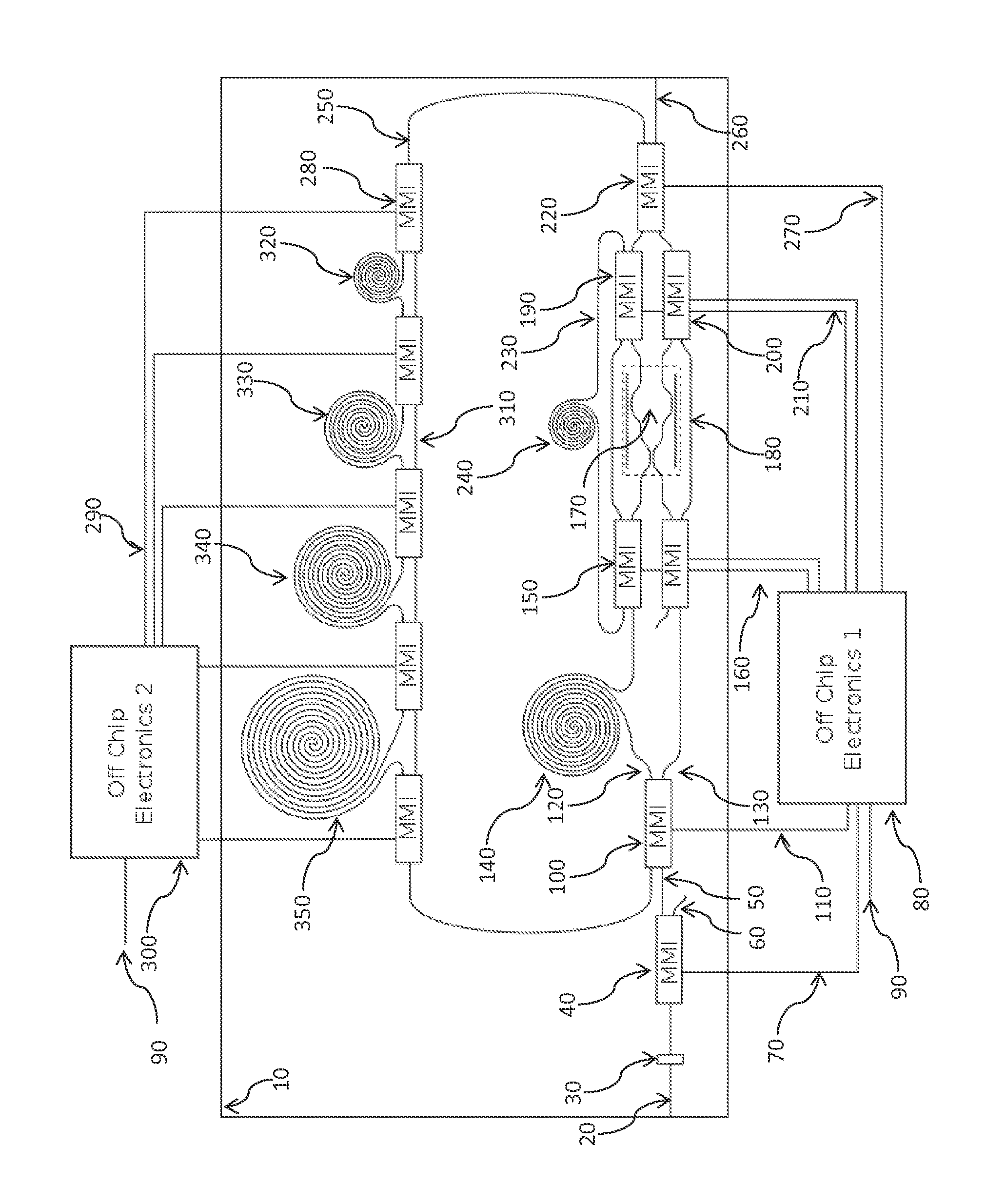Two dimensional photonic cluster state generator from sequential photons with variable delay loopback
a technology of photon clustering and generator, applied in the field of two-dimensional photonic cluster state generator from sequential photons with variable delay loopback, can solve the problems of difficult and expensive photon detection prospects
- Summary
- Abstract
- Description
- Claims
- Application Information
AI Technical Summary
Benefits of technology
Problems solved by technology
Method used
Image
Examples
Embodiment Construction
[0015]Referring to FIG. 1 shows the full integrated waveguide (IW) chip 10. The input to the device is an evenly spaced sequence of photons with period T. Such photons can be created from the source of Mower and Englund (WO2013009946 A1) or other sources.
[0016]The photons enter the chip 10 via the input port 20. The preferred integrated waveguide chip 10 is a single large monolithic chip of Lithium Niobate (LiNbO3). The input port 20 is a polarization maintaining optical waveguide fabricated in the chip 10. Polarization maintaining waveguides are required as we chose to encode our qubits in the polarization modes of each photon. Thus the resource of periodic photons must also be in a known polarization state. It is then trivial to rotate the input state polarization state to any desired state via a polarization controller 30. The preferred implementation uses integrated waveguide based polarization controllers 30 which function via the electro-optical effect. Such rotations could ta...
PUM
| Property | Measurement | Unit |
|---|---|---|
| dimensions | aaaaa | aaaaa |
| length | aaaaa | aaaaa |
| optical delay | aaaaa | aaaaa |
Abstract
Description
Claims
Application Information
 Login to View More
Login to View More - R&D
- Intellectual Property
- Life Sciences
- Materials
- Tech Scout
- Unparalleled Data Quality
- Higher Quality Content
- 60% Fewer Hallucinations
Browse by: Latest US Patents, China's latest patents, Technical Efficacy Thesaurus, Application Domain, Technology Topic, Popular Technical Reports.
© 2025 PatSnap. All rights reserved.Legal|Privacy policy|Modern Slavery Act Transparency Statement|Sitemap|About US| Contact US: help@patsnap.com


